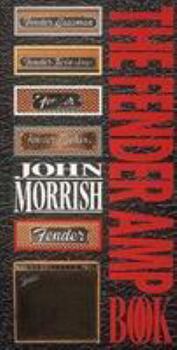Fender Amp Book (Cloth)
Select Format
Select Condition 
Book Overview
A full descriptive history of Fender's classic instrument amplifiers from the 1940s to the 1990s. Including colour photographs and technical specifications for all the most collectable models This description may be from another edition of this product.
Format:Hardcover
Language:English
ISBN:087930345X
ISBN13:9780879303457
Release Date:January 1995
Publisher:Miller Freeman Books
Length:96 Pages
Weight:0.15 lbs.
Dimensions:0.6" x 4.8" x 9.3"
Customer Reviews
4 ratings
A fun, informative book
Published by Thriftbooks.com User , 14 years ago
This book is a solid little piece of work. It's fun to read and yet contains a lot of good information. There are a few small factual errors, but very few. There also is a great section listing the specs on every model Fender amp model made up to the publication date of the book. I hope the author sees fit to update the book in the future.
Very nice Fender amp history
Published by Thriftbooks.com User , 16 years ago
This is very comprehensive and well written. Fills lots of gaps in my understanding of the Fender Amp history. I am a collector/refurbisher of vintage Fender, and other, Amps and guitars. Basically, I like this book.
Not too bad!
Published by Thriftbooks.com User , 18 years ago
This book wasn't quite what I expected it to be, but there is still some really good info in it. Definitely a good place to get started learning about where Fender amps came from!
I liked this book so much I bought it twice!
Published by Thriftbooks.com User , 23 years ago
I liked this book so much so that when I misplaced my first copy I bought another. Basically, this book will give you enough detailed information to (1) accurately identify ALMOST any Fender amp when you see it; and (2) appreciate some of the history and facts about the individuals who were involved in the design and manufacture of that particular line of amplifiers at different times during the history of the company.The first 67 pages of the book could be called "The Rise and Fall, and Rise Again of the Fender Musical Instrument Company." It begins with a well-written account of Leo Fender's life and leadership of company from its founding in the late 1940's through its sale in 1965 to CBS. To his credit, Morrish doesn't stop there but goes on describe in detail Fender's CBS years, including the specific contributions of those amp designers who came after Leo Fender, such as Ed Jahns, Paul Rivera, and humbucker-designer Seth Lover. The CBS years end when a group of Fender executives led by Bill Schultz got together in 1985 and bought the company for $12.5 million, which got them very little, not even a factory or buildings -- just the Fender name, product lines and some inventory. This section of the book concludes by describing the enormous creative efforts that led to the post-CBS rebirth of Fender, not just through its many popular re-issue amps, but also the newest Custom Shop and other offerings. These stories are told in a skillful journalistic fashion, and are accompanied by many photos of older and newer amps, as well as sales brochures. Best of all, as he wrote this book, Morrish interviewed many people including not just the heavyweights -- such as Don Randall and Forrest White -- but also true keepers of the faith, such as Bill Carson (who inspired the design of the Stratocaster), and the late Sam Hutton, who worked on the factory floor and who later became a legend in his own right as a highly skilled and dedicated restorer of old Fender amps. The last 20 or so pages of the book comprise a "Reference Section" that includes very detailed information on Fender amplifier identification, based on control panel configuration, numbers and types of tubes, speaker brands and sizes, cabinet covering and design, badge style, control panel layout, suggestions about how to date Fender amps based on manufacturing codes, and so on. Despite the effort to capture all Fender amp design features in this section, the Reference Section is not perfect. For one thing, the amp-by-amp descriptions are listed in alphabetical order but do not include model numbers, a serious omission since many amps with the same model name have different model numbers over the years, which reflect significant design differences. Morrish also misses a few amps -- for example, the late 1950's tweed Fender Pro Model 5E5-A is not mentioned nor described even though some connoisseurs consider this one to be a real tone monster almost on a par with the Bassman (but not





